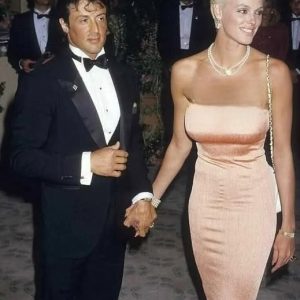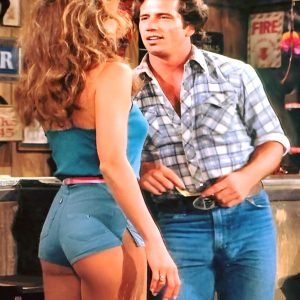The Lynx players had arrived for their pre-game warmups wearing black T-shirts printed with names and messages that spoke directly to recent tragedies. On the front of the shirts were the names of two Black men who had been shot and killed by police: Philando Castile, who had been fatally shot during a traffic stop in Minnesota just days earlier, and Alton Sterling, who had been killed by police in Louisiana. The killings had sparked widespread protests, grief, and calls for accountability. For the Lynx players—several of whom lived and worked in the Minneapolis community—these losses felt close, personal, and urgent.
The back of the shirts carried an image of a Dallas police badge, honoring the five officers killed in a targeted attack during a protest in Texas. Beneath the badge were the words “Black Lives Matter.” The message was clear: the shirts were not anti-police, nor were they intended to elevate one group’s pain over another. Instead, they acknowledged two tragedies at once—civilians killed by police, and police officers killed in the line of duty. The players explained that their goal was to mourn all who had died, call attention to systemic issues, and advocate for peaceful, meaningful change.
Before the game, several players spoke at a press conference. Rebekkah Brunson, one of the team’s leaders, shared a powerful personal story about a childhood experience in which police officers drew their guns in her presence. Her voice was calm but firm as she said, “What is happening today is not new.” She went on to emphasize that racial profiling and senseless violence had long been part of the lived reality for many Black Americans. “We have decided it is important to us to take a stand and raise our voices,” she said. “Racial profiling is a problem. Senseless violence is a problem.”
The players did not call for hostility, judgment, or antagonism. Their statements focused on unity, empathy, and constructive dialogue. They explicitly stated that they wanted to honor both civilians and officers who had lost their lives. In a time when the nation felt raw and divided, the Lynx were attempting to model a response grounded in compassion and responsibility.
But their gesture did not land that way with everyone.
While the team prepared for their game, the four off-duty officers assigned to work security noticed the shirts and became upset. According to the Minneapolis Police Federation, the officers felt the shirts were offensive and asked team officials to instruct players to remove them. When the Lynx declined—asserting the players’ right to wear them—the officers walked off the job, abandoning their assigned posts. They did not return for the remainder of the night.
This sudden departure immediately raised questions—not only about the officers’ reactions, but also about professional obligations. The officers were working as private security while wearing their official police uniforms, a status that created dual expectations: loyalty to their employer for the evening, and adherence to public duty associated with the badge and uniform.
The president of the Minneapolis Police Federation, Lt. Bob Kroll, publicly defended the officers’ decision. He criticized the Lynx protest as “anti-police” and accused the players of buying into a “false narrative” about police misconduct. His remarks went further, suggesting that professional athletes should “stick with playing ball” and avoid engaging with social or political issues. “People go there to watch the basketball game,” he said, positioning the Lynx statements as inappropriate and unnecessary.
Kroll’s comments sparked immediate backlash. Critics argued that his response ignored the clear intent of the shirts—to honor both civilians and officers—and dismissed legitimate concerns about racial inequality and violence. Others pointed out that telling athletes to “stay in their lane” reflected a long-standing tendency to silence public figures who speak out on social issues, particularly when those figures are women or people of color.
Among those who responded was Minneapolis Police Chief Janee’ Harteau. While acknowledging the emotional strain officers were under following the Dallas attack, she rejected the walkout as unacceptable behavior. Harteau emphasized that when officers are in uniform, even while working off-duty assignments, they are expected to “adhere to our core values and honor their oath of office.” Walking away from their contracted duty, she said, did not meet public expectations for professional conduct and accountability. Her statement underscored a critical point: personal disagreement does not excuse abandoning responsibilities tied to the uniform.
Minneapolis Mayor Betsy Hodges went even further, issuing a direct public critique of Kroll. In a pointed Facebook post, she called his remarks “jackass” and clarified that he did not speak for her or for the city’s leadership. “Bob Kroll sure as hell doesn’t speak for me about the Lynx or about anything else,” she wrote. Her response signaled that the issue had escalated beyond a single game into a broader conflict over public messaging, professional duty, and freedom of expression.
For the Lynx players, the walkout and backlash highlighted exactly why they felt compelled to speak up in the first place. The speed and intensity of the officers’ reaction demonstrated the deep tension surrounding conversations about race, policing, and justice in America. Yet the Lynx remained calm, reiterating that their actions were rooted in mourning and a desire for unity, not division. They did not retaliate publicly, nor did they escalate the conflict. Instead, they allowed their original message to stand: violence is unacceptable, inequality is real, and communities deserve safety and respect on all sides.
In the weeks that followed, the incident became part of a much larger national dialogue. It occurred during a turning point in sports activism, predating other high-profile moments such as Colin Kaepernick’s kneeling protest later that same year. In many ways, the Lynx served as early leaders in a movement that would soon transform the role of athletes in public life. They demonstrated that professional sports were not insulated from social issues—that athletes were citizens, community members, and witnesses to injustice, not silent entertainers.
The 2016 Lynx protest is remembered today not only for the walkout, but for what it represented: a moment when a women’s sports team took a bold, thoughtful stand at a time when few others were willing to do so. Their message acknowledged tragedy on all sides, criticized violence without vilifying all police, and challenged audiences to confront uncomfortable truths.
Nearly a decade later, the event remains a powerful reminder of the stakes involved when institutions—sports, policing, government, media—intersect with human pain and civic responsibility. It showed that activism does not always come with raised fists or loud demands. Sometimes it comes in the form of silent words on a T-shirt, spoken in grief, worn in unity, and backed by courage.





